No products in the cart.: $0.00
Best Acne Treatments for Every Skin Type 2023

It is common to develop acne on the chest, regardless of age. The acne develops as a result of bacterial infection in the pores or hair follicles that are clogged with excessive oil (sebum) and dead skin cells.
Acne on the chest can be bothersome and can cause pain on friction with clothes. When not checked timely, chest acne can exacerbate and cause infections and scars.
Fortunately, chest acne can be treated easily with medications and home remedies. This article discusses the various causes of chest acne and the treatments and self-care measures to manage it.
Causes of Chest Acne
The primary causes of chest acne are an increased sebum production and the accumulation of dead skin cells in the skin pores, causing the pores to clog and increasing the risk of bacterial infection.
In addition, several other factors can contribute to the development of chest acne, or acne in general, including:
- Skin dryness. Your skin may turn dry due to weather changes, over washing, or various other factors. This, in turn, can trigger an increase in natural sebum production to help rebalance skin moisture, often making the skin prone to acne.
- Use of heavy products. Applying occlusives, emollients, or other heavy or dense moisture-binding products to your skin can also clog the skin pores, not allowing your skin to breathe.
- Tight clothing. Tight clothing, especially those made of synthetic fabrics that do not absorb sweat, can increase the risk of acne formation due to constant friction and sweat accumulation.
- Hormonal fluctuations. Sebum production in the skin is controlled by hormone levels, such as androgen levels. An increase in androgen associated with adolescence and teenage, especially in women, can trigger acne breakouts. Hormonal changes associated with pregnancy, early menopause, and conditions such as polycystic ovarian syndrome can also cause acne.
- Excessive sweating. Sweat can easily accumulate on your skin after a workout or in the summer season. When not washed off properly, it can clog the pores and lead to acne formation.
- Certain medications. The use of medications such as oral or intravenous corticosteroids and chemotherapy drugs can also increase the chances of acne formation.
- Lifestyle factors. Some lifestyle habits such as applying cosmetics on the chest area, using chemical-laden laundry detergents containing artificial fragrances, and a high sugar intake can also contribute to acne risk.
- High stress. Increased levels of stress are often associated with chest acne formation.
- Waxing. Waxing can initiate or exacerbate an acne flare-up due to the removal of the hair from the root or even as a reaction to the wax itself.
- Folliculitis. It is a dermatological condition characterized by inflammation of the hair follicles and can affect any part of the body.
- Pityrosporum folliculitis. A yeast called Pityrosporum can infect the hair follicles and cause an acne flare-up. It most commonly affects the upper chest area.
- Hot tub folliculitis. Prolonged bathing in hot water can cause painful pustules and papules on the areas covered by the swimming suit. This is often accompanied by other symptoms such as fever.
Treatment for Chest Acne
Chest acne is a common condition that can be largely treated with over-the-counter products. You can consult your doctor for a confirmed diagnosis, which involves a physical examination of the affected area, and get appropriate treatment according to the severity of your acne.
Over-the-counter treatment
Most cases of chest acne can be managed with one or more of the following over-the-counter topical or oral medications:
Benzoyl peroxide: It acts on the acne-causing bacteria and prevents their growth. In addition, benzoyl peroxide dries out the acne lesions and promotes peeling of dead skin cell layers. Benzoyl peroxide is highly effective on inflamed acne lesions.
Salicylic acid: It works as an exfoliant that unclogs skin pores and clears bacteria, aiding in acne management. Various salicylic acid-based products are widely available, such as sprays, creams, face washes, and exfoliators.
Retinoid: It is another ingredient that unclogs skin pores. Retinoids can be used for both inflammatory and non-inflammatory acne lesions. These are often used in combination with benzoyl peroxide for increased efficacy.
Antibiotics: You may be prescribed topical antibiotics during acne flare-ups to control acne spread. Commonly used antibiotics include tetracycline, nadifloxacin, clindamycin, and erythromycin, which are useful in the treatment of mild to moderate inflammatory acne.
Oral contraceptives: These are commonly prescribed to women that have hormonal imbalances as the underlying reason for acne.
Sunscreen: While sunscreens do not help treat acne, they are useful in preventing acne scar formation and discoloration caused by active acne lesions.
-
Product on sale
 Admire My Skin$69.00
Admire My Skin$69.00 -
Product on sale
 DR. MADH SKIN SOLUTIONS AMMA ELIXIR$110.00
DR. MADH SKIN SOLUTIONS AMMA ELIXIR$110.00 -
Product on sale
 FRIGG ATTUNING FACE POTION$60.00
FRIGG ATTUNING FACE POTION$60.00 -
Product on sale
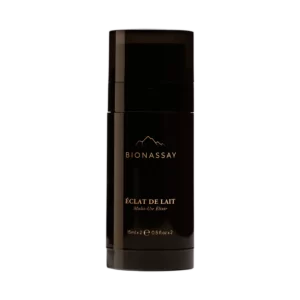 ÉCLAT DE LAIT Age-Preserving & Nourishing Serum$126.00
ÉCLAT DE LAIT Age-Preserving & Nourishing Serum$126.00 -
Product on sale
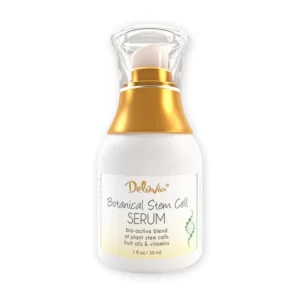 BOTANICAL STEM CELL SERUM$48.00
BOTANICAL STEM CELL SERUM$48.00 -
Product on sale
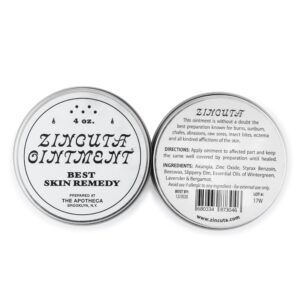 Zincuta Ointment$12.50
Zincuta Ointment$12.50 -
Product on sale
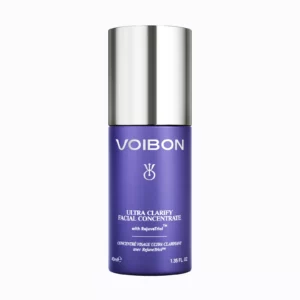 BONEFFIC | ULTRA CLARIFY FACIAL CONCENTRATE$79.00
BONEFFIC | ULTRA CLARIFY FACIAL CONCENTRATE$79.00 -
Product on sale
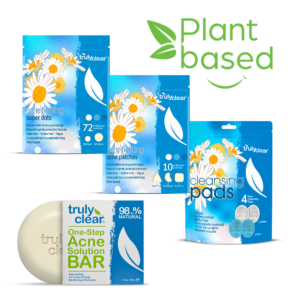 Truly Clear Ultimate Bundle$90.00
Truly Clear Ultimate Bundle$90.00
In-office treatment
If you have severe chest acne, you may likely be affected by acne scars. In such a case, your doctor may suggest the following in-office treatments for better acne management:
- Chemical peels: Alpha and beta hydroxy acids are used to exfoliate the skin, revealing new skin layers, and to control bacterial growth. Chemical peels are useful in treating acne scars of different depths. You use chemical peels in addition to other acne treatments if you are bothered by scars from previous flare-ups.
- Laser resurfacing and light therapies: High-energy light is used to burn the damaged skin to treat scars, especially raised acne scars.
Home Remedies for Chest Acne
Several natural ingredients can help control and manage chest acne and are worth a try provided you are not allergic to them.
The most common home remedies for chest acne include the following:
1. Cinnamon and honey
Cinnamon and honey are both antibacterial and aid in eliminating acne-causing bacteria when used together. In addition, these ingredients provide anti-inflammatory properties and help soothe the skin, proving useful in chest acne management.
How to use:
- Mix ½ tbsp of cinnamon powder with ½ tbsp of honey.
- Apply the paste to the affected area.
- Wash it off after 15 minutes and pat your skin dry.
2. Tea tree oil
Tea tree oil is rich in terpenes that target Propionibacterium and other acne-causing bacteria, therefore reducing the frequency and severity of acne breakouts. In fact, the use of topical 5% tea tree oil has been shown to be effective in treating mild to moderate acne.
Tea tree oil can be used as a spot treatment.
How to use:
- Mix a few drops of tea tree oil with a carrier oil such as almond, olive, or coconut oil.
- Apply the oil blend to the acne using a cotton ball.
- After 10–15 minutes, wash the area with lukewarm water.
3. Aloe vera
Aloe vera is rich in anti-inflammatory and soothing agents that can help reduce the irritation and discomfort associated with acne lesions. It also helps bind moisture to the skin.
The high amounts of vitamin C, E, and beta-carotene in aloe vera gel help control acne formation. When used in 50% concentration with tretinoin, aloe vera gel was shown to be highly effective in controlling acne lesions, both inflammatory and non-inflammatory.
How to use:
- Extract fresh aloe vera gel from an aloe leaf.
- Massage the gel on the affected area for a few minutes.
- Leave it to dry.
4. Turmeric
Turmeric is a potent antimicrobial, antineoplastic, anti-inflammatory, and antioxidant agent that can help control acne formation.
How to use:
- Mix turmeric with honey to form a thick paste.
- Apply the paste to the chest acne.
- Wash the area after 10–15 minutes.
5. Oatmeal
Oatmeal can help dry out existing acne lesions and also prevent the formation of new acne lesions due to its antimicrobial nature. Moreover, the anti-inflammatory and antioxidant properties of oatmeal help control the swelling, redness, and pain associated with acne.
How to use:
- Make a portion of oatmeal and mix in honey and lemon juice.
- Once cool, apply the mixture to acne-prone skin.
- After 30 minutes, wash the area with warm water.
-
Product on sale
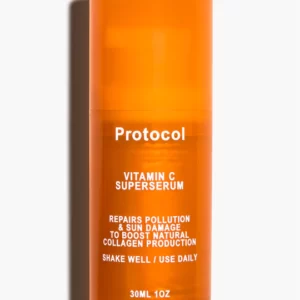 protocol Vitamin C Superserum$72.00
protocol Vitamin C Superserum$72.00 -
Product on sale
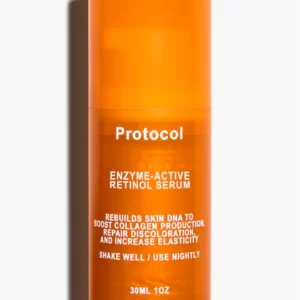 Enzyme-Active Retinol Serum$88.00
Enzyme-Active Retinol Serum$88.00 -
Product on sale
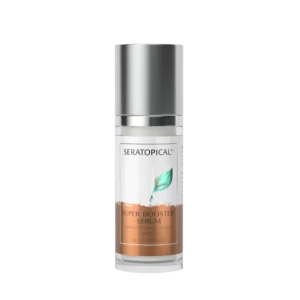 Super Booster Serum$53.96
Super Booster Serum$53.96 -
Product on sale
 TWENTY-NINE BOTANICAL SERUM$90.00
TWENTY-NINE BOTANICAL SERUM$90.00 -
Product on sale
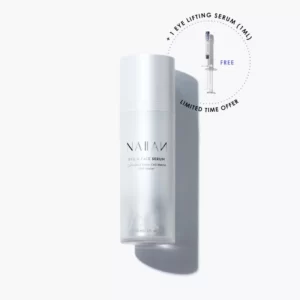 EYE & FACE SERUM (+ 1 FREE EYE LIFTING SYRINGE)$119.00
EYE & FACE SERUM (+ 1 FREE EYE LIFTING SYRINGE)$119.00 -
Product on sale
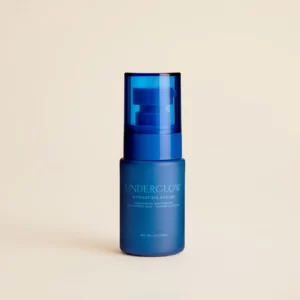 UNDERGLOW HYDRATING SNOW MUSHROOM SERUM$60.00
UNDERGLOW HYDRATING SNOW MUSHROOM SERUM$60.00 -
Product on sale
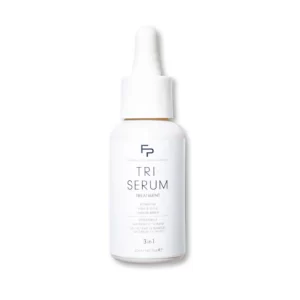 FORMULAE PRESCOTT TRI-SERUM$119.00
FORMULAE PRESCOTT TRI-SERUM$119.00 -
Product on sale
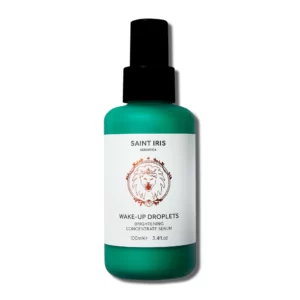 SAINT IRIS WAKE-UP DROPLETS$91.00
SAINT IRIS WAKE-UP DROPLETS$91.00 -
Product on sale
 DR. MADH SKIN SOLUTIONS AMMA ELIXIR$110.00
DR. MADH SKIN SOLUTIONS AMMA ELIXIR$110.00
Lifestyle Changes to Manage Chest Acne
It is vital to make changes to your skin care and lifestyle to manage your acne better and prevent its formation in the first place.
Here are some suggestions:
1. Cleanse your skin with specialized products
It is recommended to bathe using cleansers containing alpha or beta hydroxy acids since they help dissolve pore-clogging proteins and exfoliate the skin. You can also use pH-balanced cleansers to improve skin health and prevent acne breakouts.
2. Exfoliate weekly
Exfoliating your skin once or twice a week using a mild scrub prevents dead skin cell buildup, aiding in the prevention and treatment of acne caused by blocked pores. However, make sure not to over exfoliate as it can dry out the skin, in turn boosting oil production and increasing the risk of acne breakouts.
3. Take a shower after sweating or exercise
It is essential to take a shower before and after working out as this prevents sweat accumulation and therefore acne formation. This also helps prevent friction due to sweat, which may aggravate acne.
4. Wear loose clothes
It is best to wear non-fitting clothes made of breathable, sweat-wicking fabrics, especially in the summer season, to prevent irritating the acne lesions.
5. Consume plenty of water
Maintaining optimum body hydration levels plays an important role in acne management by aiding in the removal of toxins and improving skin health in general.
6. Avoid using products containing artificial fragrances
Soaps, perfumes, cosmetics, or body lotions that contain artificial fragrances can irritate the skin and block skin pores, aggravating acne. Therefore, it is best to avoid them and use natural products instead.
7. Control sugar intake
Since a high consumption of sugar is associated with frequent, severe acne breakouts, it is best to moderate your sugar intake.
8. Do not touch your acne
Refrain from popping, picking, or squeezing your acne lesions as it increases the risk of scarring and bleeding. Additionally, you may spread acne-causing bacteria when you touch other body parts with your contaminated hands.
9. Use light moisturizers
Opt for light moisturizers instead of greasy lotions that can clog your skin pores.
Complications
Chest acne is generally a mild condition that doesn’t present serious complications.
However, severe cases of acne, if not treated properly, can lead to the development of discoloration around the acne lesions and scarring. For instance, inflammatory acne can cause permanent scars that may be pitted, elevated, or thick than normal scars.
In addition, improper management of chest acne may increase the risk of infection, especially when you scratch or pick at them.
When to See a Doctor
It is recommended to consult your doctor in the following cases:
- If the acne doesn’t clear in 6 weeks
- If you develop acne scars
- If the over-the-counter treatments do not improve the acne
What you may ask your doctor
- What treatments do you suggest for my chest acne?
- Can the chest acne cause any complications or cause scars?
What your doctor may ask you
- When did you first notice the appearance of your chest acne?
- Have you tried treatments for the acne yet?
Most-Asked Questions About Chest Acne
What dietary changes can help control chest acne?
Chest acne is triggered by a number of factors, including dietary choices. It has been shown that consuming foods high in saturated fats, such as ice cream, fast foods, fries, and sugary foods and drinks, can increase the chances of an acne flare-up by causing inflammation in the body. Therefore, it is best to avoid inflammatory food items.
Can apple cider vinegar help in the treatment of chest acne?
Apple cider vinegar (ACV), being acidic, can help clear your skin pores by dissolving the accumulated dirt and dead skin cells. It also helps dry out the acne lesions faster, therefore aiding in acne management. ACV also possesses antibacterial and anti-inflammatory properties, useful in acne treatment.
You can mix 1 tbsp of ACV with 2 tbsp of water and apply it to the affected area using a cotton ball. Rinse the skin after 30 minutes of application.
Final Word
Chest acne, similar to facial acne, is a common problem that affects people of both genders. Caused by clogging of pores, chest acne can largely be managed with better skin care and mild exfoliants.
You can also use over-the-counter medications to treat your acne lesions. In some cases, you may need to consult a doctor to help clear severe acne, which may be occurring due to an underlying medical condition.





